May 27, 2017
When we reached Manavlok in the morning, we were amazed to see the campus. 3-4 backhoe loaders and tractors lined up, a huge solar ray collector on the terrace, and a social service school campus nearby. The campus has 24*7 electricity supply and abundant water supply – thanks to rain water harvesting and bore well recharge. Employees of Manavlok start their day by prayers and then each one starts cleaning the campus. Manavlok does not appoint special staff for cleaning – their work ethic is laudable.
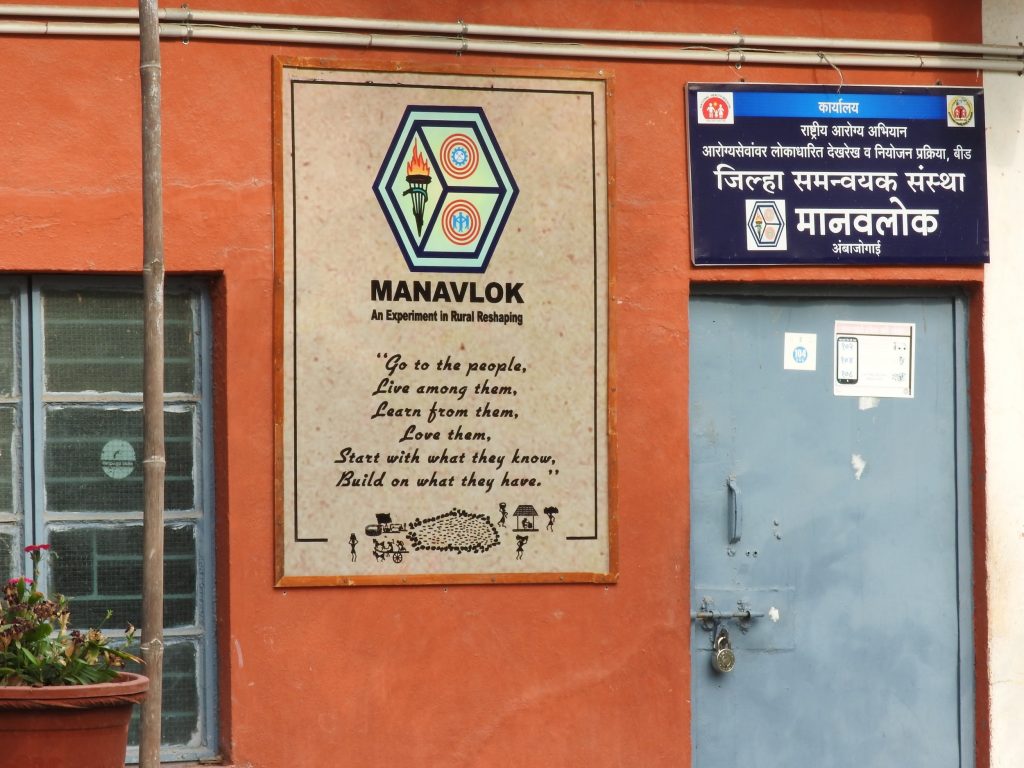
After meeting a few Manavlok employees, we left for Palaskhed where borewell recharge work has begun. Manavlok employees working for borewell recharge include 2 fulltime backhoe loader operators and 2 young engineers. We visited 4 sites where pits have been dug around the bore well. Overall, progress of the project is a little slow. Only 4 pits have been made till date. Since monsoon is approaching soon and there are 25 bore wells to be recharged, the team should work faster. However, the engineers working on site are very passionate. They are optimistic that they will complete the digging work by the end of this month. According to them, once the mud is removed, rest of the work will not be affected much by rains. If everything goes smoothly, all 25 bore wells will be ready by the end of June. We met three farmers whose borewells are being recharged. All of them were happy and thankful.
Earlier, there was a huge scarcity of water in Palaskhed. Villagers used to get drinking water only for one hour per month. They have completed the water-cup initiative, wherein a reverse osmosis filter is used to fill purified water bottles sold at 25 paise/litre. They have enough water in wells as a result of water conservation initiatives. While this helped to increase the groundwater level in the village, borewell recharge will help individual farmers increase their crop yield.
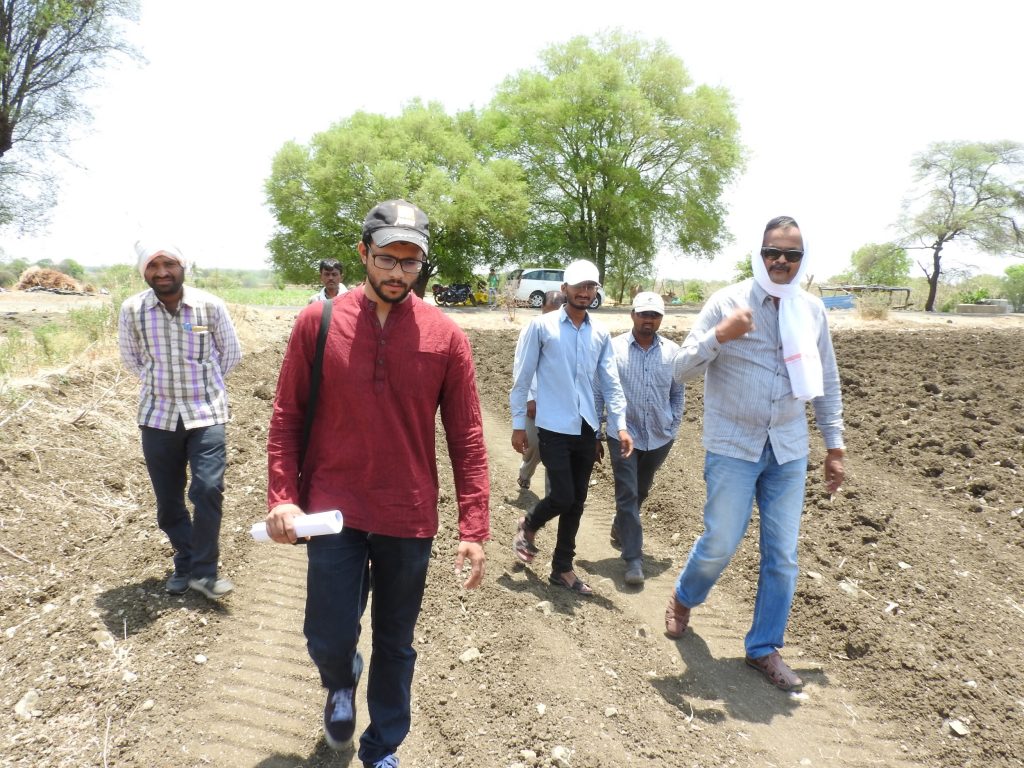
Next, we visited a nearby village, Mandwa. Mandwa is a small village with approximately 500 households spread across a hilly terrain of 1500 hectares. A few water conservation projects were implemented last year, the results of which were clearly seen. Lakes were not completely dry, many farms were full of veggies and other crops. This year, Manavlok is working to further their soil and water conservation initiatives. These include building lake beds, forming stone walls on mountains and making bunds on valleys. Most importantly, the villagers gather together and work willingly on these projects. They call it Shramdaan (labor donation).

Picture: Bunds made by 200 women in 5 hours
Not only is water conserved by using stone bunds made manually, but also by creating contour trenches and earthen bunds. Trenches are trapezoidal in shape and constructed across slopes with 45-50 cm depth and width.

Picture: Trenches made by backhoe loader
Earthen bunds are created by machines across the hills at a certain distance. Manavlok further plans to plant trees along these bunds.
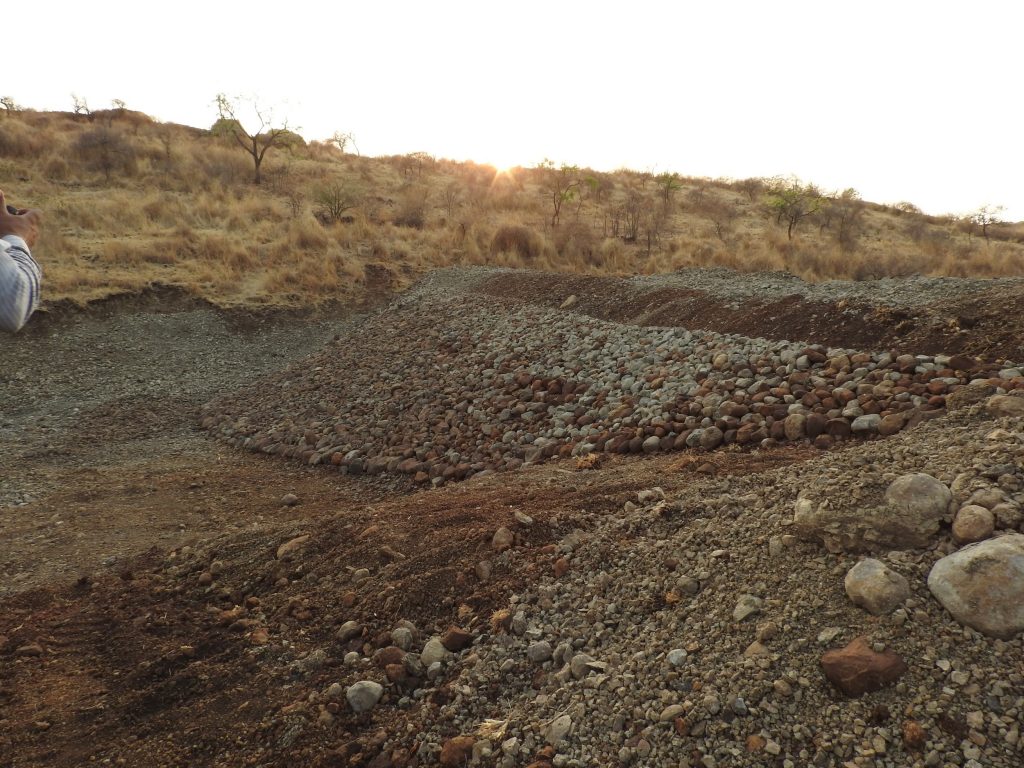
Picture: Bunds made across valley
Water flowing in the valleys is blocked and preserved by water arresters.

Picture: Water arresters in valley
Water beds are created around the lake at regular intervals, opening the areas for “soaking” and improving ground water level. This technique has already proven to be of much help this year. Even in the month of May, many lake beds have water, which was never seen in the past.
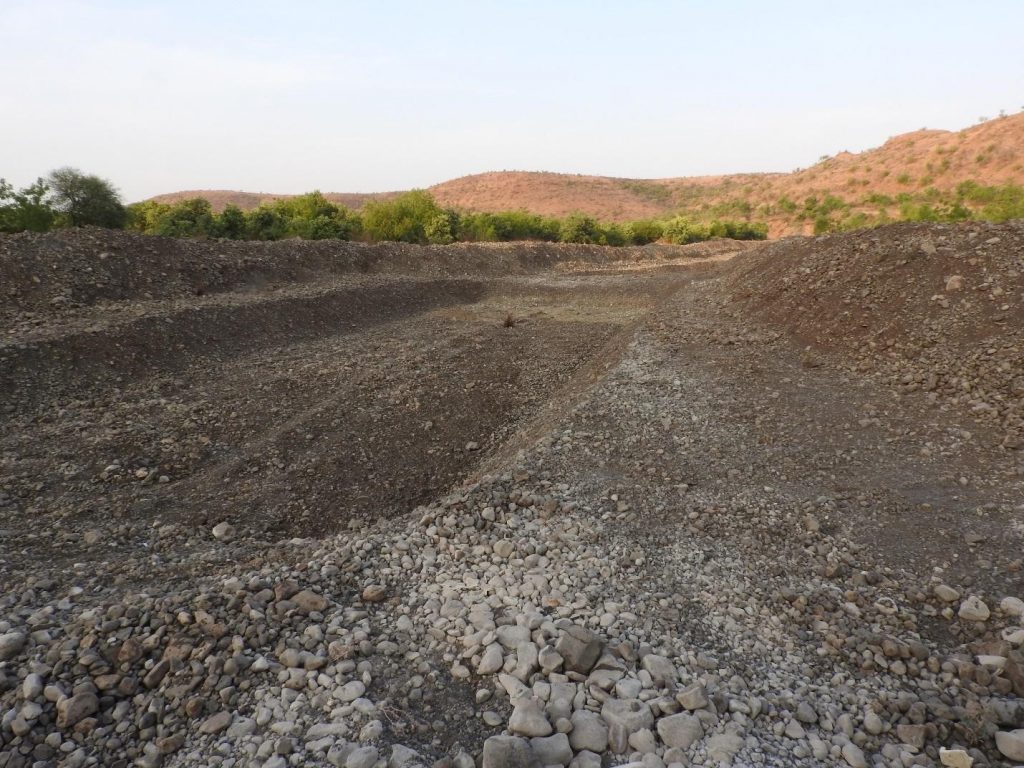
Picture: Waterbed under construction
Overall, the visit was enlightening. We were able to see and appreciate the excellent ground work that organisations like Manavlok do to help farmers in rural India. Special thanks to Aniket Lohiya, a dynamic and diligent leader, who spent an entire day with us, even when he had a packed schedule.
We also identified areas where there is large scope for help from Save Indian Farmers. Apart from water conservation, there are other opportunities to alleviate the problems farmers face. A few initiatives which SIF could consider supporting are – transporting Sitafal (from Beed to nearby cities), producing hydroponics fodder and installing lightning arrester in villages.
- Sitafal (sugar apple) harvest: On a 5-10 km journey to Mandwa, one can see ample sitafal trees, loaded with fruits to the point of bending the tree. This fruit is naturally available and grows in all parts of the village. Since the fruit is available in profusion, it has a very low selling price in the village. No one takes any effort to pluck the fruit and sell it, and as a result these fruits are left to rot on trees. About 200 kms from this village, sitafal is an expensive fruit. SIF should explore this opportunity – collection and sale of Sitafal in these markets will not only give employment to villagers, but also provide them with a business opportunity. Manavlok is interested in this idea and is ready to support it.
- Hydroponics: Manavlok had already implemented a hydroponics fodder plant. The pilot project had inspired many farmers to produce fodder using hydroponics. However, due to some challenges, they stopped this project.
Challenges faced:
- As the setup was not automated, someone had to manually water the seeds twice or thrice a day. Electricity is available only for 8 hours in the village, hence sprayers with timers could not be used.
- Fungus grew under fodder due to unclean trays.
Even after facing challenges, Mr. Aniket is optimistic about hydroponics and excited about using solar energy to power the hydroponics setup. He said that would like to work with Save Indian Farmers to start a pilot solar-powered hydroponics plant in Manavlok nursery, where they have a caretaker already. If successful, this project can be expanded to different parts of Beed.
- Lightning arrester: Each year people are struck by lightning. Many farmers lose their lives to due to this natural calamity. He proposes to install a lighting collector in each village, with the help of government.
________________________________________________________________________________________________________________
About the Author: Palak Verma is a Senior Engineer at John Deere Technology Center India, working as a Structural Analyst in Engine Analysis and Simulation. She wants to change the society one step at a time, and is an active member of Corporate Social Responsibility groups at Deere as well as Save Indian Farmers.

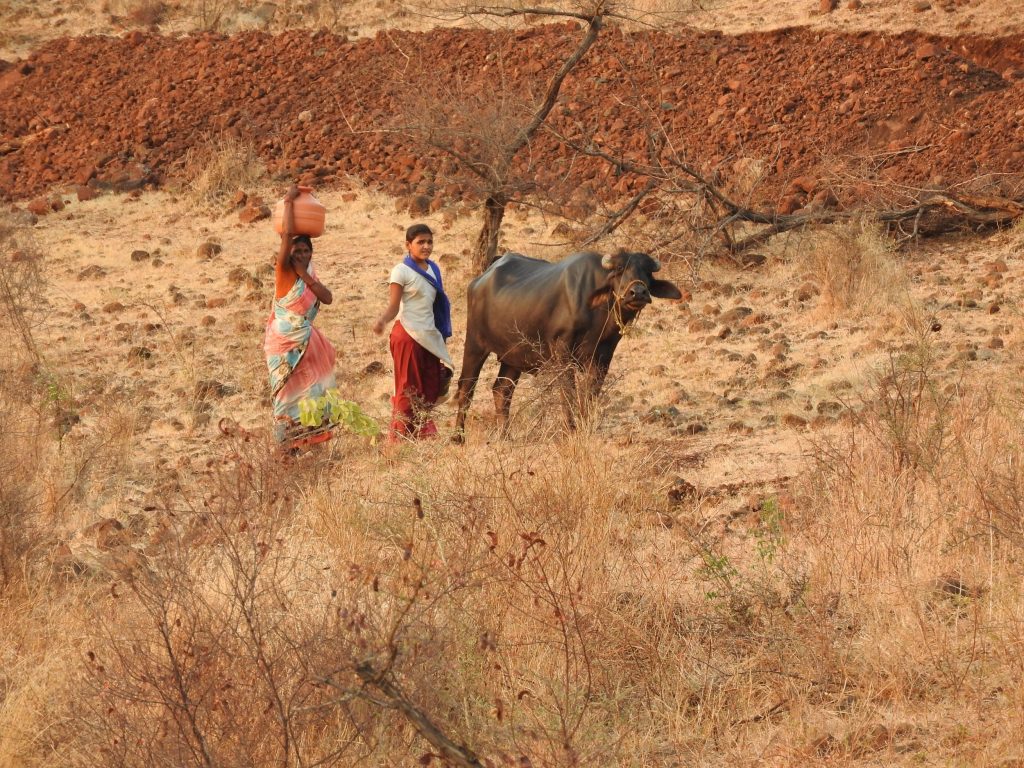




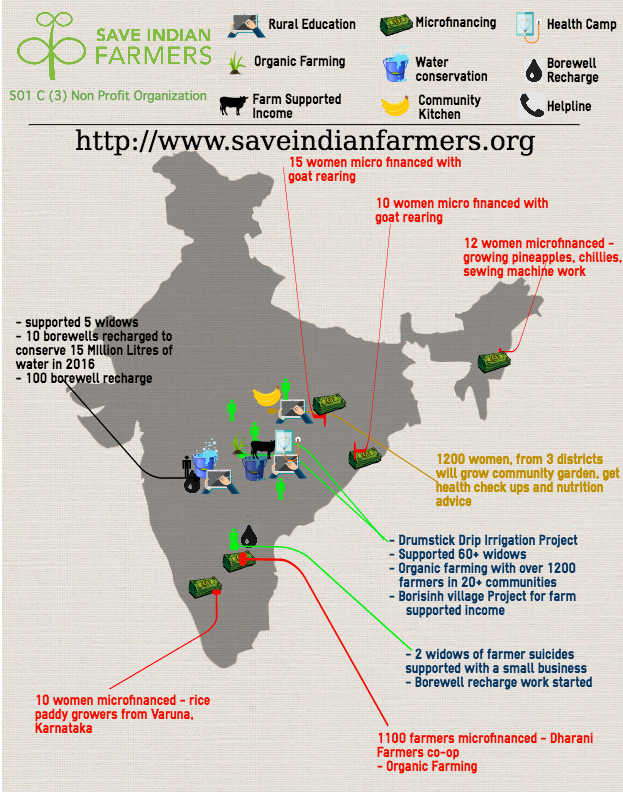
Excellent work!! This is really inspiring. About the hydroponics, if they electricity isn’t available. And you have to water manually. Why don’t you setup an overhead tank, use valves and some mechanism similar to hourglass. I am not sure of how your hydroponics really works, but if the problem is of watering manually then I guess you can construct some basic mechanism to make it automatic without electricity.